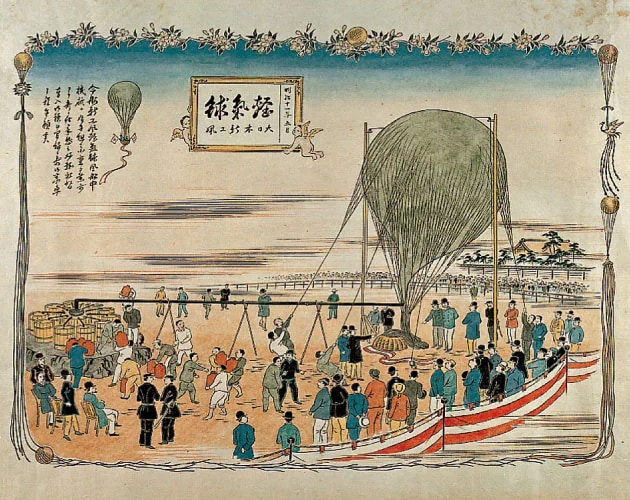Japan’s First Successful Manned Balloon Launch


Series: MOMENTUM
In the summer of 1877, Genzo Shimadzu Sr, the founder of Shimadzu Corporation, received a request from the Kyoto prefectural government to build a hydrogen balloon. At the time he had been engaged in manufacturing educational physics and chemistry instruments. The Kyoto government’s decision to launch a manned balloon was their way of highlighting their view that introducing Western physics and chemistry education was the only way for the city to recover from its stagnation after losing capital status to Tokyo in 1869. However, there had never been a successful manned balloon launch in Japan before then, and there were no design plans or other resources available to instruct how to make the balloon.
A single drawing of a hot air balloon in a foreign country was all Genzo had to work from.
Furthermore, he was given less than four months to build it.
Genzo had a natural desire to embrace challenges and had soon developed a hydrogen generator system based on the drawing using eleven sake barrels. However, making the balloon proved to be more difficult. To carry a human passenger, the fabric needed to be very light, strong, and impervious to gases. After much trial and error, and in a battle against time, he finally solved the problem by coating silk fabric with dammar gum resin dissolved in perilla (egoma) oil. On December 6, the day of the flight, Genzo’s manned balloon rose to an impressive height of 36 meters, amidst thunderous applause from the approximately 50,000 spectators witnessing the event. This spectacular feat, achieved in Japan for the first time, reinvigorated the people of Kyoto and also boosted the fame of Genzo Shimadzu Sr.
 Copied
Copied

